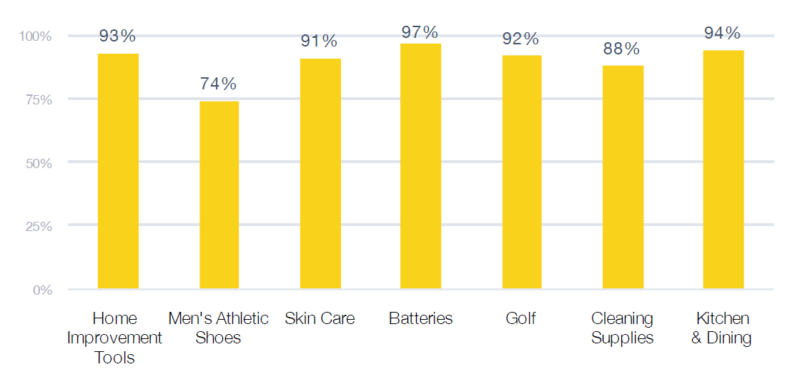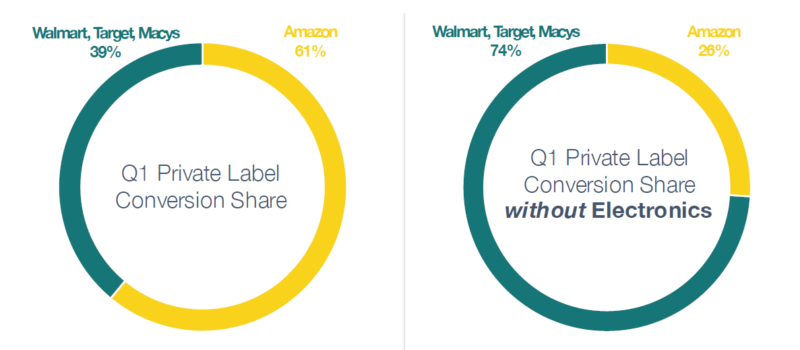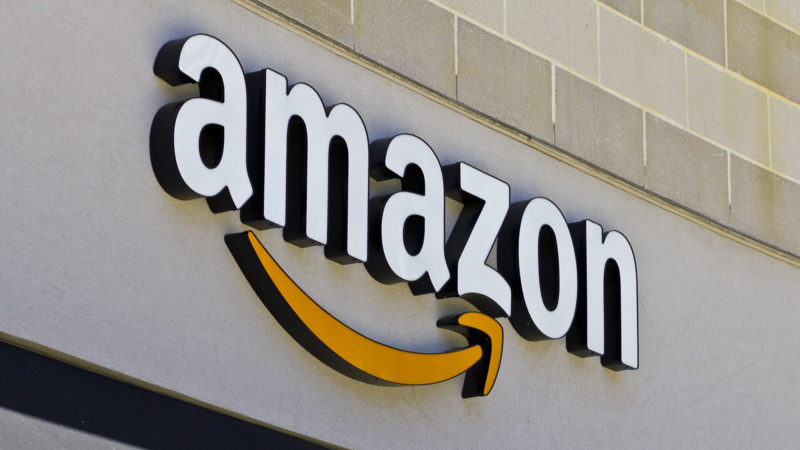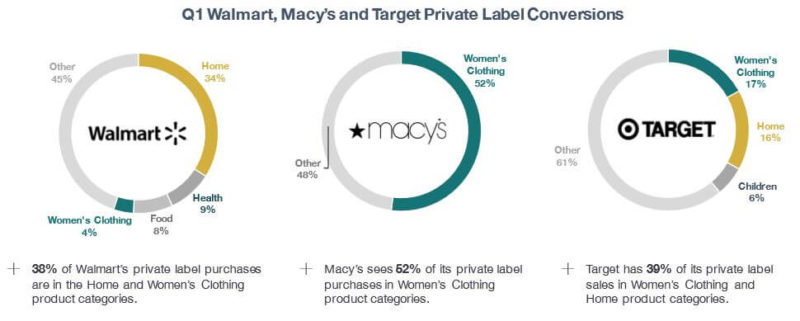Amazon owns more than 90% market share across 5 different product categories [Report]
Reports from Kleiner Perkins' Mary Meeker and ecommerce data firm Jumpshot underscore Amazon's growing ecommerce power.
Amazon is eating the world. Two recent reports illustrate just how much.
In her anticipated annual Internet Trends report, released Wednesday, Kleiner Perkins partner Mary Meeker cited research from Morgan Stanley on the domination of one ecommerce player. As online sales grow overall, Amazon’s share of ecommerce gross merchandise value has increased from 20 percent in 2013 to 28 percent in 2017, while the combined share of everyone else has shrunk.
A report [registration required] from Jumpshot, an analytics platform tracking consumer behavior online, released this week, shows Amazon dominates ecommerce sales in several categories. The company owned more than a 90 percent market share for online purchases in home improvement tools, skin care, batteries, golf and kitchen and dining accessories in Q1 2018.
Tracking the number of online purchases across 100 million devices from 500 different ecommerce retailers and marketplaces, Jumpshot reports that Amazon took a 97 percent market share of online battery purchases in Q1 of this year, along with a 94 percent share of kitchen and dining product purchases, a 93 percent share of home improvement tool purchases, a 92 percent share of golf-related product purchases and a 91 percent share of skin care product purchases.
Yes, that means that of all the online skin care purchases that Jumpshot tracked, for example, just 9 percent occurred on domains such as those of mass retailers like Target and Walmart and vertical sites like Sephora and Ulta. Amazon accounted for all the rest.
2018 Q1 Amazon market share

Source: Jumpshot
Not only is Amazon eating up market share across various product categories, its intake is growing. When looking at quarter-over-quarter growth between Q4 2017 and Q1 2018, Amazon gained share in all seven product categories listed in the report. Cleaning supply purchases on Amazon saw a 13 percent lift in market share between the last quarter of 2017 and the first quarter of this year.
Private label landscape
Jumpshot also tracked private label conversions on Amazon, Walmart, Macy’s and Target — and found that Amazon also leads in this area, just not quite as decisively.
Amazon accounted for 61 percent of online private label conversions tracked during the first quarter of 2018, while Walmart, Target and Macy’s owned a combined 39 percent.
2018 Q1 private label conversion share

Source: Jumpshot
Amazon’s private label AmazonBasics represents 88 percent of the company’s private label products, says Jumpshot.
Electronics played a huge role in Amazon’s lead in private label conversions. Excluding electronics conversions from the private label numbers, Amazon’s share drops from 61 percent to 26 percent, with Walmart, Target and Macy’s taking 74 percent of private label conversions.
Jumpshot explained to Marketing Land, “The electronics category includes products like cables and rechargeable batteries, which, because they’re purchased a lot more and in higher quantities, provide Amazon an incredible amount of purchases — far more than any other category where they have private labels, and far more than any of the nearest competitors. We see, for instance, AmazonBasics cables outselling Anker cables at a rate of nearly 3-1.”
Private label purchases from Walmart, Macy’s and Target, on the other hand, are somewhat concentrated in the home and/or women’s clothing categories. More than a third of Walmart’s online private label sales came from the Home category last quarter. Women’s clothing accounted for more than half of Macy’s private label conversions. Combined, women’s clothing and home made up 39 percent of Target’s ecommerce conversions in Q1.
As Meeker points out in her report, ecommerce continues to accelerate and gain as a percentage of overall sales — reaching a 13 percent share of retail sales in 2017. Jumpshot’s data shows retailers still have opportunities in private labels and other categories, but they will have a hard time competing on commodity products particularly.
Opinions expressed in this article are those of the guest author and not necessarily MarTech. Staff authors are listed here.
Related stories


